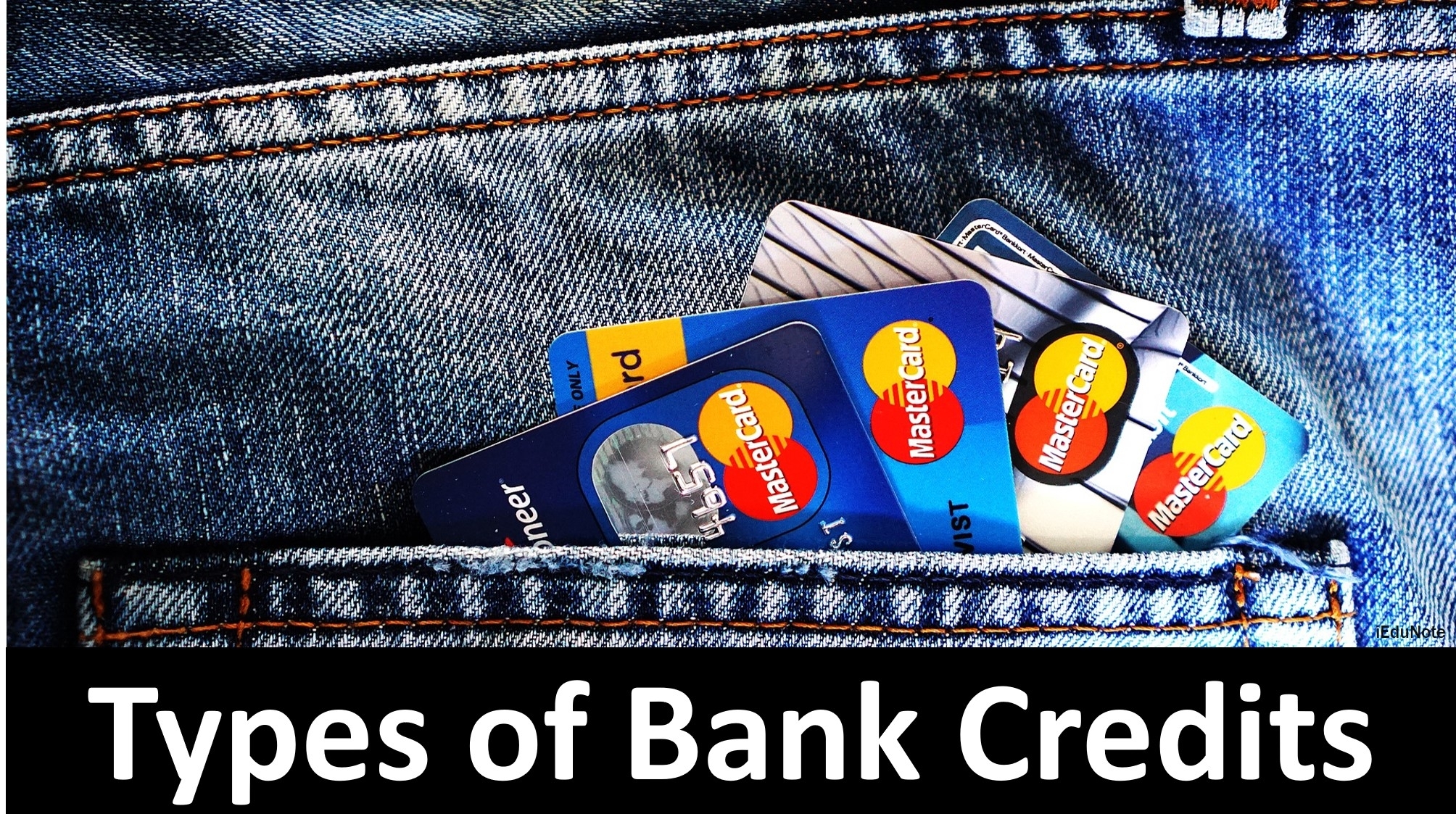What is Bank Credit?
Bank Credit is the aggregated amount financial institutions (i.e., banks) are willing and able to offer a loan or advance to an individual or organization.
Types of Bank Credits
Bank credit can be classified into many sections on various bases.

This table explores the diverse types of bank credits, classified by purpose and duration. Whether for real estate, commercial needs, or individual purposes, understand how short, mid, and long-term credits function.
| Type of Credit | Duration | Based On | Purpose |
|---|---|---|---|
| Real Estate Loans | Short-term and Long-term | Secured by real property | To finance construction, land development, purchase of farmland, homes, apartments, commercial structures, and foreign properties |
| Financial Institution Loans | Varies | Creditworthiness of the institution | To provide credit to banks, insurance companies, finance companies, and other financial institutions |
| Agricultural Loans | Varies | Farming and ranching operations | To assist in planting and harvesting crops and supporting the feeding and care of livestock |
| Commercial and Industrial Loans | Varies | Business operations | To cover purchasing inventories, paying taxes, and meeting payrolls |
| Loans to Individuals | Varies | Individual’s creditworthiness | To finance the purchase of automobiles, mobile homes, appliances, and other retail goods, repair and modernize homes, cover the cost of medical care and other personal expenses |
| Miscellaneous Loans | Varies | Various factors | Includes all loans not listed above, including securities loans |
| Lease Financing Receivables | Varies | Value of the leased item | Where the lender buys equipment or vehicles and leases them to its customers |
| Short-term Credits | Within one year | Inventory and accounts receivable | To meet working capital needs |
| Mid-term Credits | One to five years | Immovable properties | Banks customarily grant such loans against immovable properties |
| Long-term Credits | Beyond five years | Immovable properties | Used to construct plants and factories, construct houses, and purchase land, equipment, and machinery |
| Funded Credits | Varies | Individual’s or organization’s creditworthiness | Given out of the bank’s funds to individuals and organizations through current accounts or loan accounts |
| Non-funded Credits | Varies | Bank’s reputation and good name | Given through issuing various documents, such as a letter of credit (LC), bank guarantee, etc. |
Now, let’s understand the types of credit divided into several categories.
Types of Bank Credits By Purpose of the Credit
Ruse and Hudgins have divided loans into seven broad categories, delineated by their purposes:
- Real estate loans are secured by real property – land, buildings, and other structures – and include short-term loans for construction and land development and longer-term loans to finance the purchase of farmland, homes, apartments, commercial structures, and foreign properties.
- Financial institution loans include credit to banks, insurance companies, finance companies, and other financial institutions.
- Agricultural loans are extended to farms and ranches to assist in planting and harvesting crops and supporting the feeding and care of livestock.
- Commercial and industrial loans are granted to businesses to cover purchasing inventories, paying taxes, and meeting payrolls.
- Loans to individuals include credit to finance the purchase of automobiles, mobile homes, appliances, and other retail goods, repair and modernize homes, cover the cost of medical care and other personal expenses, and extend directly to individuals or indirectly through retail dealers.
- Miscellaneous loans include all loans not listed above, including securities loans.
- Lease financing receivables, where the lender buys equipment or vehicles and leases them to its customers.
Types of Bank Credits By Duration of the Credit
Depending on the duration for which loans are given, loans can be classified into three categories:
- Short-term credits are scheduled to be repaid within one year. Businesses take short-term loans to meet working capital needs. Short-term loans are usually given against inventory and accounts receivable. These loans can also be unsecured, such as a line of credit, revolving credit.
- Mid-term credits are repaid over a period ranging from one year to five years. Banks customarily grant such loans against immovable properties. Interest rates on mid-term loans are higher than on short-term loans.
- Long-term credits are loans whose repayment period extends beyond five years. Long-term loans are used to construct plants and factories, construct houses, and purchase land, equipment, and machinery. Immovable properties are used as securities for such loans.
Types of Bank Credits By Nature of the Credit
- Funded credits or non-documentary credits are given out of the bank’s funds to individuals and organizations through current accounts or loan accounts. Financed credits include loans, cash credit, and bank overdraft.
- Non-funded credits or documentary credits are given through issuing various documents. This form of credit bank provides the loan by not extending cash but by lending their reputation and good names. Examples of non-funded credit include a letter of credit (LC), bank guarantee, etc.
These are the standard types of bank credits.
![types of bank credits Bank Credits: Types, Purpose, Duration [Full Guide]](https://i0.wp.com/www.iedunote.com/img/832/types-of-bank-credits.jpg?resize=1280%2C720&quality=100&ssl=1)




